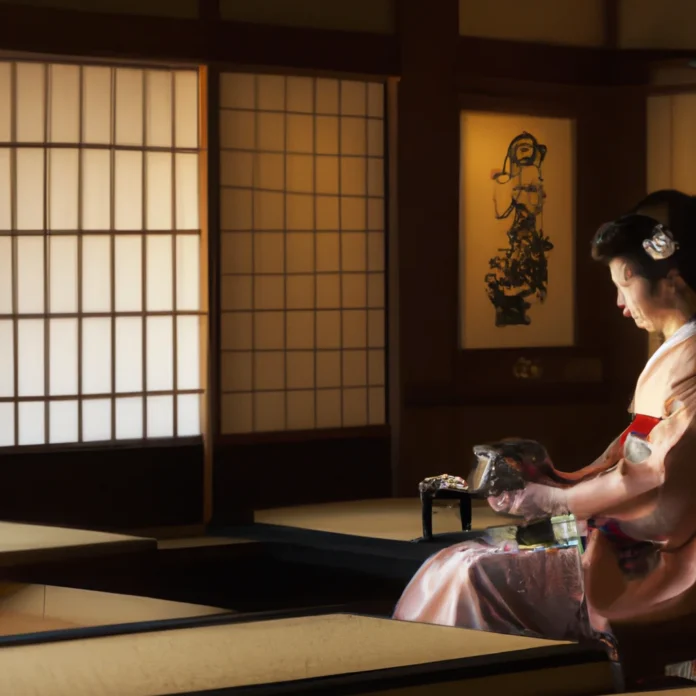Kimono Tea Ceremony Experience at Kyoto Oritsuruya, Nishiki
In the heart of Kyoto, the Oritsuruya offers visitors an authentic experience of the traditional Japanese tea ceremony while dressed in a kimono. This experience not only highlights the intricate art of tea preparation but also places significant emphasis on cultural appreciation. In this article, we will guide you through the various aspects of this unique event, from its historical significance to practical details that will enhance your visit.
Understanding the Tea Ceremony
The Japanese tea ceremony, known as Chanoyu, is much more than just a ritual of preparing and serving tea. It is a meditative practice rooted in Zen Buddhism, emphasizing harmony, respect, purity, and tranquility. Each movement is deliberate, embodying a philosophy that transcends mere enjoyment of tea.
The Historical Context of Tea in Japan
The introduction of tea to Japan is credited to Buddhist monks who brought it from China in the early 9th century. Over centuries, tea evolved from a simple beverage to a sophisticated ritual. By the 15th century, the tea ceremony had crystallized into the form we recognize today, influenced significantly by tea masters like Sen no Rikyū, who emphasized simplicity and natural beauty.
What to Expect at Oritsuruya
At Oritsuruya, participants are greeted with a serene atmosphere that reflects the principles of the tea ceremony. Upon arrival, guests are welcomed in a traditional manner, setting the tone for the experience. The venue itself is adorned with tatami mats and sliding shoji doors, creating an authentic Japanese environment.
Kimonos: A Cultural Attire
Wearing a kimono is a vital part of the tea ceremony experience. At Oritsuruya, you will have the opportunity to choose from a selection of beautifully crafted kimonos. The staff assists with dressing, ensuring that you are adorned properly for the ceremony. The kimono not only enhances the aesthetic appeal but also connects participants to centuries of tradition.
Tea Preparation and Serving
The tea ceremony at Oritsuruya is led by a trained tea master who demonstrates the intricate process of preparing matcha (powdered green tea). Participants will learn about the tools used, including the chawan (tea bowl), chasen (bamboo whisk), and chashaku (tea scoop). The master’s movements are graceful and intentional, ensuring that each step is thoroughly appreciated.
The Role of Zen in the Tea Ceremony
Central to the tea ceremony is the principle of Zen, which promotes mindfulness and presence. The act of preparing and drinking tea becomes a moment of reflection and tranquility. At Oritsuruya, guests are encouraged to focus on the taste of the tea and the beauty of the surroundings, fostering a sense of inner peace.
Benefits of Participating in a Tea Ceremony
Engaging in a tea ceremony offers numerous benefits, both personal and cultural. Participants often report enhanced mindfulness, a deeper appreciation for Japanese culture, and a unique opportunity to connect with others. The ceremony acts as a bridge between the past and present, allowing visitors to engage with a time-honored tradition.
How to Book on Viator
To experience the Kimono Tea Ceremony at Oritsuruya, booking is simple through Viator. By visiting this link, you can secure your spot and choose from various available times. Ensure you book in advance, as this experience is popular among both locals and tourists.
Practical Information for Visitors
When planning your visit to Oritsuruya, consider the following:
- Location: Oritsuruya is conveniently located in Nishiki Market, making it accessible for tourists.
- Duration: The ceremony lasts approximately 1.5 hours.
- Language: Most sessions are conducted in English, allowing for a broader audience.
- Reservations: It is advisable to make reservations online to secure your preferred date and time.
Conclusion
Experiencing the Kimono Tea Ceremony at Kyoto’s Oritsuruya presents a unique opportunity to engage with Japanese culture deeply. This event not only teaches the art of tea preparation but also fosters a connection to Japan’s rich history and traditions. For those seeking a meaningful cultural experience in Kyoto, we highly recommend participating in this beautiful ceremony. For more information on travel and lifestyle, please visit Izase.
Disclaimer: This information is accurate to the best of our knowledge; however, there may be changes or mistakes. Please verify exact details on the Viator booking page.


